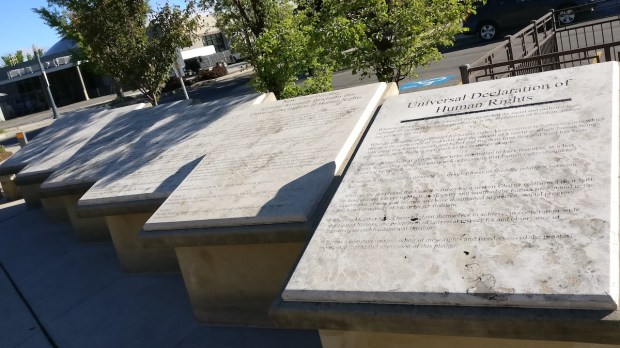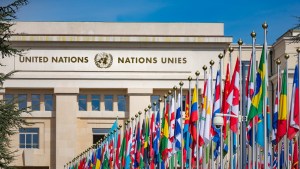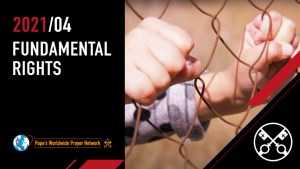The Universal Declaration of Human Rights is a document crafted under the auspices of the United Nations that enshrines a set of principles guaranteeing certain rights and freedoms to all. The Declaration consists of 30 articles detailing an individual’s “basic rights and fundamental freedoms” and affirming their universal character as inherent, inalienable, and applicable to all human beings.
Efforts leading to the drafting and acceptance of the Declaration began a year after the end of the Second World War. In June 1946, the UN’s Economic and Social Council created the Commission on Human Rights, giving it the task of preparing an International Bill of Rights. Initially consisting of 18 members, the Commission sought to be representative of all humanity, with members coming from various national, religious and political backgrounds.
In February of 1947, the Commission established a drafting committee, chaired by former US First Lady Eleanor Roosevelt, to write a Universal Declaration of Human Rights. Its principal drafter would be John Peter Humphrey, a Canadian legal scholar and Director of the Division of Human Rights in the UN Secretariat. Other prominent members of the committee were René Cassin, a French jurist; Charles Malik, a Lebanese theologian and representative to the UN, and P.C. Chang, an academic from the Republic of China.
Chang urged that drafters avoid reference to religion, so as to make the document as universally amenable as possible. Malik, who was Greek Orthodox, made references to St. Thomas Aquinas’s Summa Theologica. Both he and Cassin, who was Jewish and a Nobel Peace Prize laureate, were influenced by the Christian Democracy Movement.
Following two meetings of the drafting committee and a series of votes at various levels of the UN, the Declaration was adopted by the General Assembly on December 10, 1948 in the Palais de Chaillot, Paris. Some of the roadblocks along the way included South Africa’s protest against including a right to “dignity,” as it would clash with the country’s system at that time of apartheid, and Saudi Arabia’s opposition to a person’s right to change his religion or belief.
In the end, the first article of the Declaration stated that “All human beings are born free and equal in dignity and rights. They are endowed with reason and conscience and should act towards one another in a spirit of brotherhood.”
Its influence
Eleanor Roosevelt said that it was important to remember that the document is not a treaty, an international agreement, or a statement of law or of legal obligation. “It is a declaration of basic principles of human rights and freedoms, to be stamped with the approval of the General Assembly by formal vote of its members, and to serve as a common standard of achievement for all peoples of all nations,” she said.
Though it is not binding international law, the Declaration has influenced many national Constitutions that have been written since 1948. It has also influenced various national laws and court decisions. In a speech at the United Nations on October 5, 1995, Pope St. John Paul II called the Declaration “one of the highest expressions of the human conscience of our time.”
The preamble of the Declaration states that “recognition of the inherent dignity and of the equal and inalienable rights of all members of the human family is the foundation of freedom, justice and peace in the world.”
What rights?
Some of the rights the Declaration upholds are the right to:
- life, liberty and security of person;
- freedom of movement and residence within the borders of each state;
- marry and to found a family;
- own property alone as well as in association with others;
- freedom of thought, conscience and religion, … to manifest [one’s] religion or belief in teaching, practice, worship and observance;
- freedom of opinion and expression;
- take part in the government of his country, directly or through freely chosen representatives;
- work, to free choice of employment, to just and favorable conditions of work and to protection against unemployment;
- rest and leisure, including reasonable limitation of working hours and periodic holidays with pay.
The declaration also says that no one shall be held in slavery or servitude or be subjected to torture or to cruel, inhuman or degrading treatment or punishment.
Originally issued in English and French, the declaration has been translated into 555 languages.



